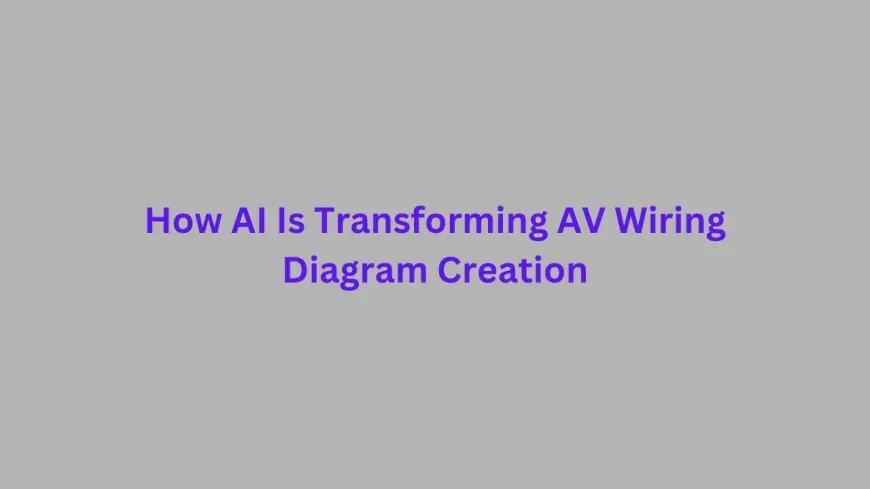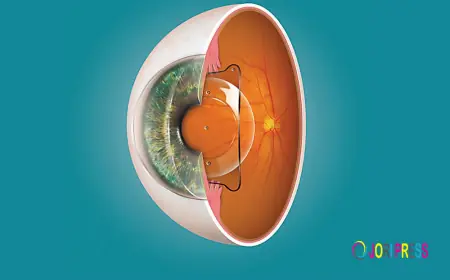How AI Is Transforming AV Wiring Diagram Creation
This blog explores how AI is changing the game and what it means for AV integrators, consultants, and designers.

In the ever-evolving world of AV technology, staying ahead means embracing innovation. At the forefront of this transformation is XTEN-AV, a platform redefining how professionals approach design, documentation, and system integration. One area that has seen a significant shift is the creation of AV wiring diagrams. With the integration of Artificial Intelligence, what once took hours can now be done in minutes, with improved accuracy and efficiency. This blog explores how AI is changing the game and what it means for AV integrators, consultants, and designers.
Introduction to AV Wiring Diagrams
AV wiring diagrams are essential blueprints for any audio-visual installation. They visually map out how each component in a system is connected, including projectors, speakers, amplifiers, microphones, and control systems. Whether for a small meeting room or a complex campus-wide system, V wiring diagrams play a vital role in the planning, installation, and maintenance phases.
Creating these diagrams manually has traditionally been time-consuming and prone to errors. With dozens of devices, cables, and configuration details involved, even experienced professionals can overlook connections or mislabel components. That’s where AI steps in to streamline the process.
What Role Does AI Play in Wiring Diagram Creation?
Artificial Intelligence helps automate the design and layout process of AV systems. Instead of drawing each connection line manually, AI algorithms analyze user inputs and system requirements to generate comprehensive and accurate AV wiring diagrams. The AI can detect configuration patterns, suggest optimal routing paths, and even flag potential compatibility issues before implementation begins.
This is especially powerful when working with large-scale or multi-room AV systems where consistency and standardization are critical. AI can ensure uniformity across diagrams and reduce the need for extensive manual revisions.
XTEN-AV and AI-Driven Diagram Creation
XTEN-AV leads the industry with its innovative design automation tools powered by AI. Its X-DRAW feature allows users to auto-generate wiring diagrams based on project scope, selected devices, and room layouts. The platform reads the project intent and applies best practices to output detailed diagrams that are both technically sound and visually clean.
For instance, if you select a particular AV receiver, the system understands its inputs and outputs and automatically links it to compatible devices. XTEN-AV does not just generate static drawings. It builds smart, dynamic V wiring diagrams that update in real time when changes are made to the equipment list or design requirements.
Benefits of AI in AV Wiring Diagram Creation
1. Faster Turnaround Times
AI dramatically cuts down the time needed to create wiring diagrams. What used to take days can now be accomplished in hours or less. This allows integrators to deliver proposals and installations more quickly.
2. Improved Accuracy
AI helps minimize human error by following established design logic and component compatibility. This leads to fewer onsite issues and a smoother installation experience.
3. Scalable for Large Projects
Managing AV systems across multiple zones or buildings is a challenge. AI supports scalability by replicating wiring standards across zones and automating repeated connections.
4. Seamless Updates and Edits
With AI, making changes is hassle-free. Update a device or change the layout, and the wiring diagram adjusts accordingly—without needing to redraw everything manually.
5. Better Collaboration
AI-driven platforms like XTEN-AV support cloud-based collaboration, enabling teams to view, comment, and modify diagrams in real time. This is especially useful for AV consultants working with architects, IT teams, and contractors.
Real-World Applications
Let’s say a consultant is designing AV systems for a 10-room training center. Each room has slight variations, but all follow a standard template. Instead of drawing diagrams for each room separately, the consultant can use AI to duplicate and customize each layout with small tweaks. The result is a consistent, professional output that saves both time and cost.
Similarly, during post-installation support, AI-enhanced diagrams allow integrators to quickly isolate and troubleshoot wiring issues by referencing smart annotations and component data.
AI Enhancements Beyond Drawing
The future of AI in AV doesn’t stop at wiring diagrams. Platforms like XTEN-AV are integrating AI for:
-
Auto-suggesting compatible products based on design constraints
-
Bill of Materials (BOM) generation directly from diagrams
-
Cost estimation and quoting tools
-
Predictive maintenance planning using IoT and AV system data
These features turn a simple diagramming task into a full project management experience.
Final Thoughts
The integration of AI into the AV design process, especially in the creation of V wiring diagrams, is a leap forward for the industry. Tools like XTEN-AV are enabling designers to work smarter, faster, and with greater confidence. No longer just a drawing, a wiring diagram becomes a living document—driven by data, logic, and intelligence.
As technology continues to evolve, so will the tools that help us build it. With AI leading the way, the future of AV design is not just digital—it’s intelligent. For professionals who want to stay ahead, adopting AI-powered platforms like XTEN-AV is not just a smart move, it’s an essential one.
Read more: https://hallbook.com.br/blogs/646356/Comparing-XTEN-AV-X-Draw-vs-Visio-for-AV-Wiring
What's Your Reaction?
 Like
0
Like
0
 Dislike
0
Dislike
0
 Love
0
Love
0
 Funny
0
Funny
0
 Angry
0
Angry
0
 Sad
0
Sad
0
 Wow
0
Wow
0















































